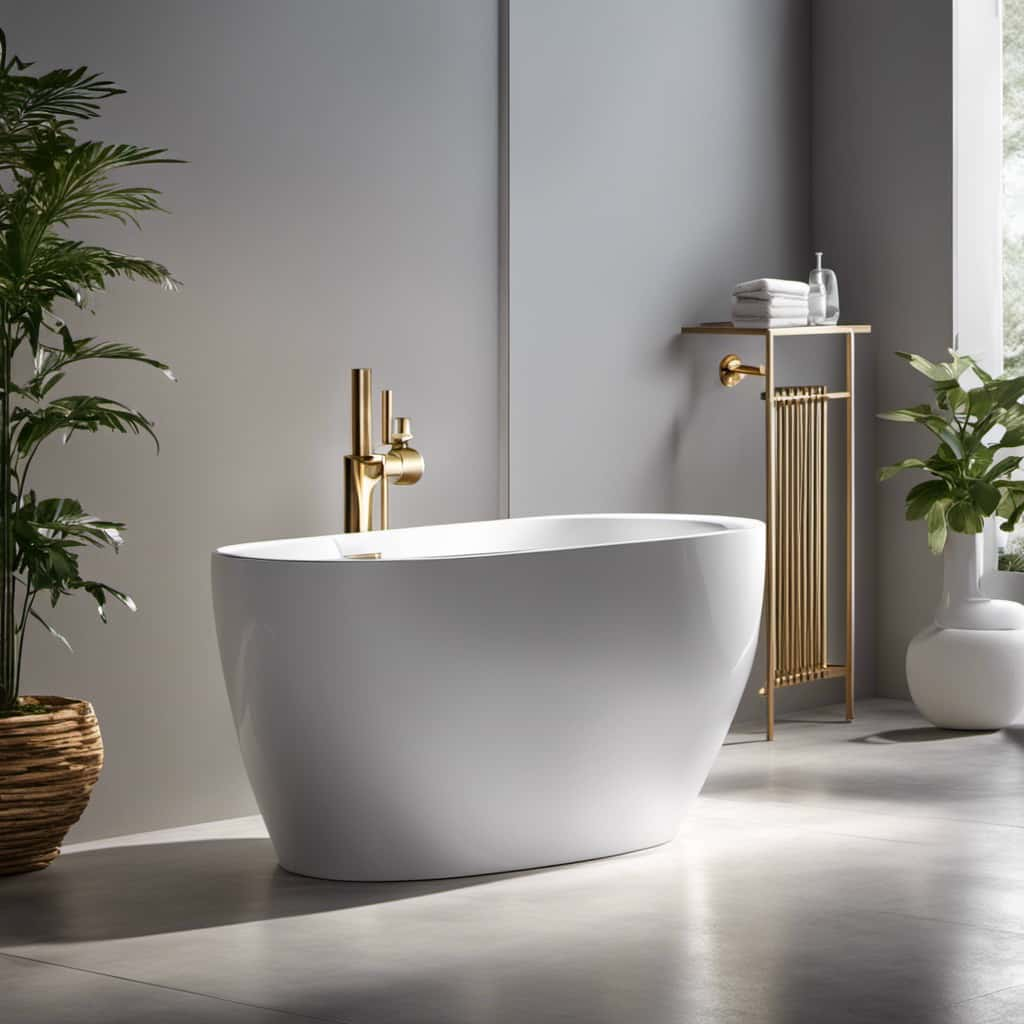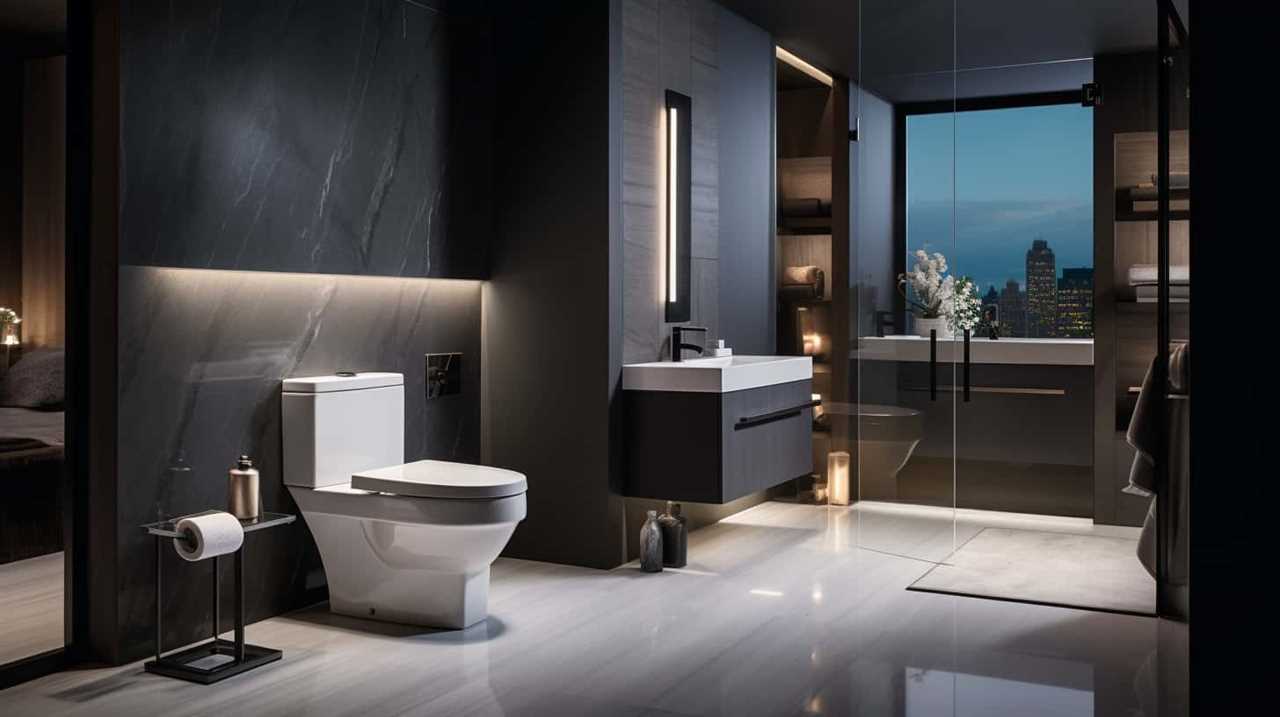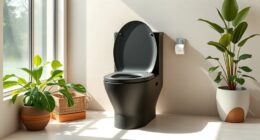Hello, fellow sea enthusiasts! Ever caught yourself pondering the correct way to dispose of waste from your cherished boat’s toilet? Worry no more, as we’re here to equip you with the essential know-how and skills required to master this vital chore.
In this article, we will delve into the importance of proper waste disposal, guide you through understanding your boat’s sanitation system, and equip you with the best methods for emptying the toilet.
So tighten your grip on that plunger and let’s set sail on this informative journey!
Key Takeaways
- Improper waste disposal can harm marine ecosystems, including aquatic life and water quality.
- Marine-approved sanitation systems, such as toilets, holding tanks, and discharge systems, effectively treat waste.
- Different methods for emptying the toilet on a boat include shore-side pump-out stations, mobile pump-out services, and composting toilets.
- Regular maintenance, proper cleaning, and use of biodegradable products are essential for safe and responsible waste management on a boat.
Importance of Proper Waste Disposal
Why is proper waste disposal essential when emptying a toilet on a boat?
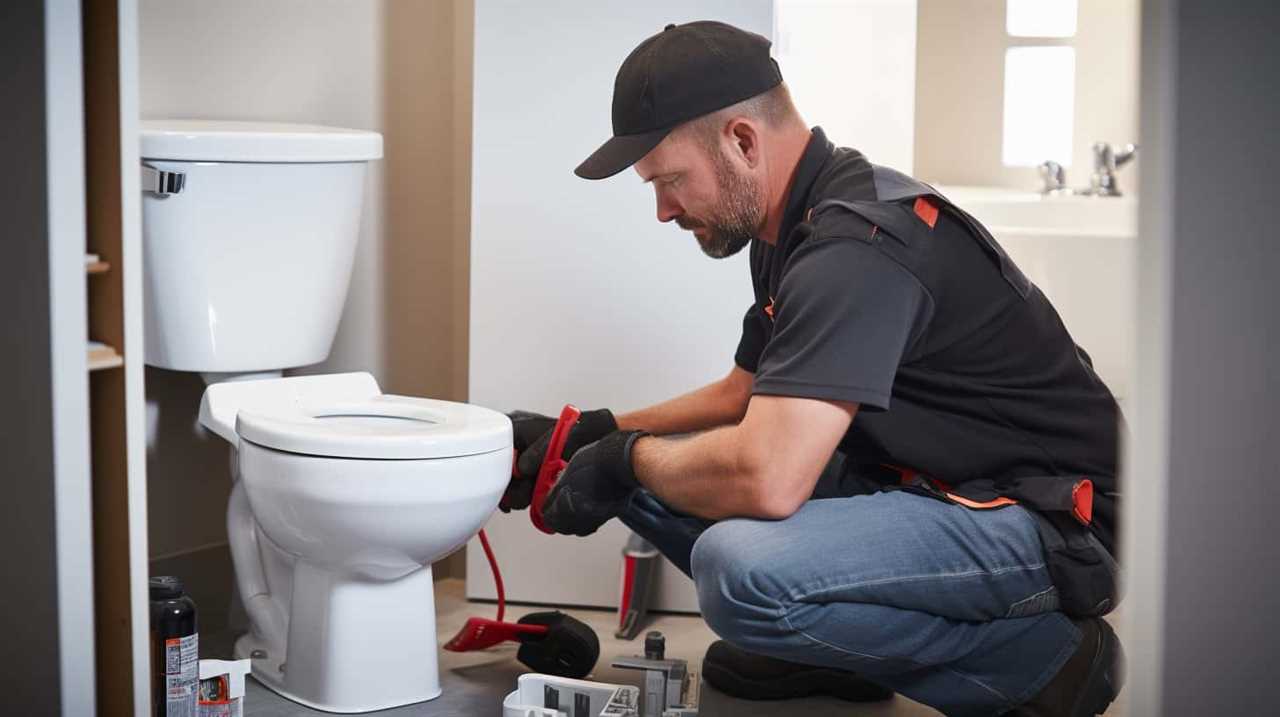
Proper waste disposal is crucial when emptying a toilet on a boat due to the potential impact on marine ecosystems. Improper disposal can lead to contamination of the surrounding water, which can harm aquatic life and disrupt the delicate balance of the ecosystem.
When waste isn’t treated properly, harmful bacteria and pathogens can be released into the water. These contaminants can have detrimental effects on fish, marine mammals, and other organisms that rely on clean water for survival. Additionally, excessive nutrients from untreated waste can cause algal blooms, leading to oxygen depletion and the death of marine life.
To prevent these negative consequences, it’s important to ensure proper waste treatment. This involves using marine-approved sanitation systems that effectively break down waste and treat it before it’s discharged into the water. These systems often utilize chemical or biological processes to neutralize harmful pathogens and reduce nutrient levels.
Understanding the Boat’s Sanitation System
To understand the boat’s sanitation system, we need to familiarize ourselves with the components that make up this crucial waste management infrastructure. In order to comply with sanitation regulations and maintain a hygienic environment on board, it’s essential to have a comprehensive understanding of how the system works and how to properly maintain it.
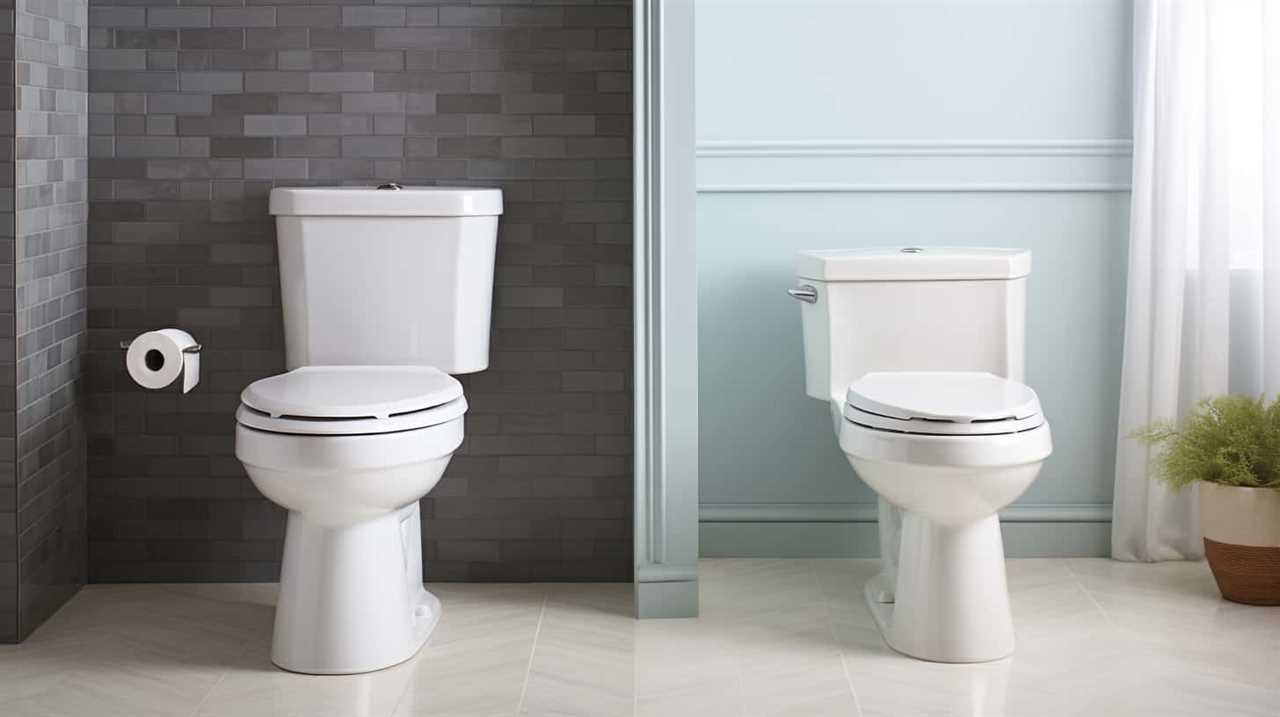
The boat’s sanitation system typically consists of three main components: the toilet, the holding tank, and the discharge system. The toilet, also known as the marine head, is similar to a regular toilet found in homes, but it’s specifically designed for marine use. It’s connected to the holding tank, which is responsible for collecting and storing waste until it can be properly emptied. The discharge system, which can be either a pump-out station or a macerator, is used to remove waste from the holding tank.
To ensure the proper functioning of the boat’s sanitation system, regular maintenance is necessary. This includes cleaning the toilet and holding tank, inspecting for any leaks or damages, and using appropriate cleaning products that are safe for the marine environment. Additionally, it’s important to regularly check and empty the holding tank to prevent overflows and odors.
Understanding the boat’s sanitation system and following proper maintenance tips is crucial for maintaining a clean and hygienic environment on board. By taking these steps, boat owners can comply with sanitation regulations and ensure the longevity and effectiveness of their waste management infrastructure.
With this knowledge in mind, let’s now move on to discussing the various methods for emptying the toilet.
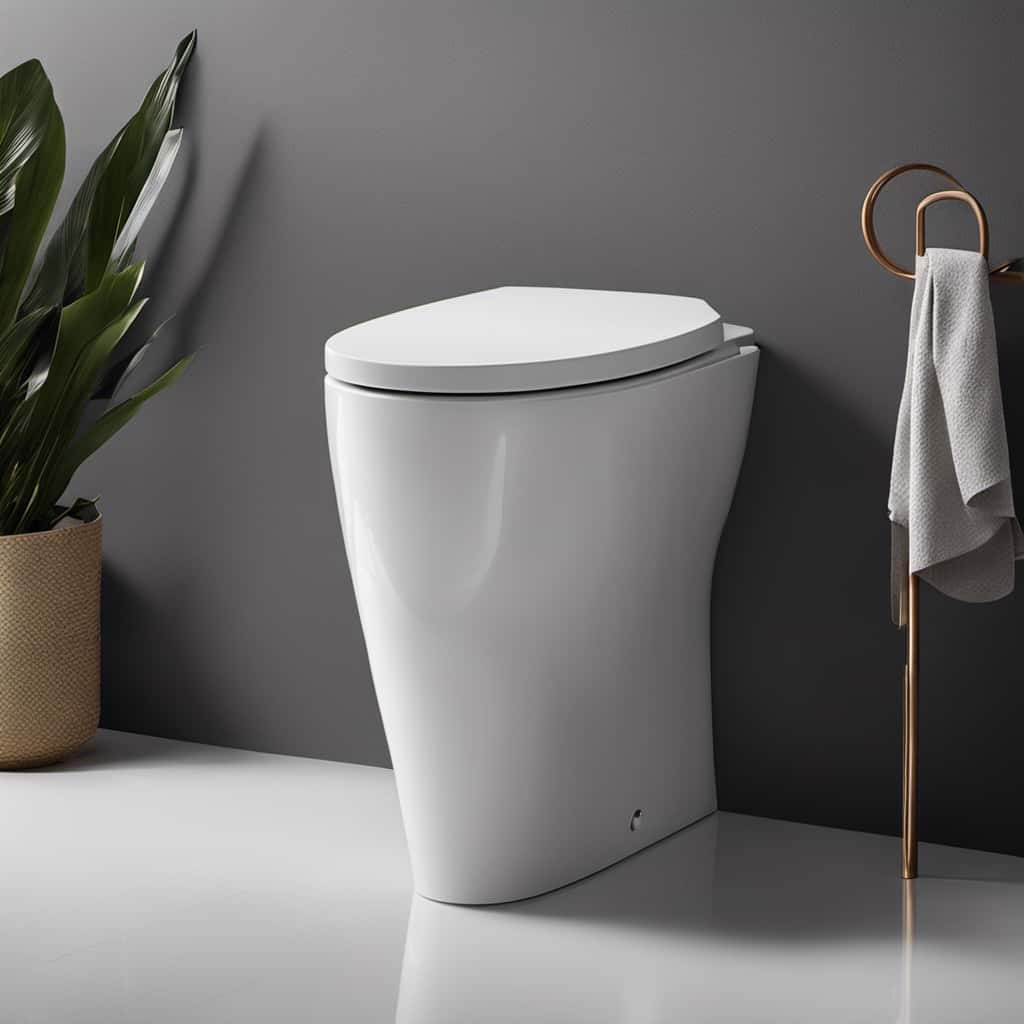
Choosing the Right Method for Emptying the Toilet
Now let’s explore the options available for emptying the boat’s toilet.
When it comes to emptying a boat’s toilet, it’s crucial to understand the regulations in place and consider alternatives to traditional methods.
The first option is to use a shore-side pump-out station. These stations are equipped with vacuum systems that can efficiently remove waste from the holding tank. It’s important to ensure that the pump-out station is properly maintained and compliant with environmental regulations.
Another option is to use a mobile pump-out service. These services typically operate using a portable pump-out unit that can be brought directly to your boat. This option offers convenience and flexibility but may come at an additional cost.
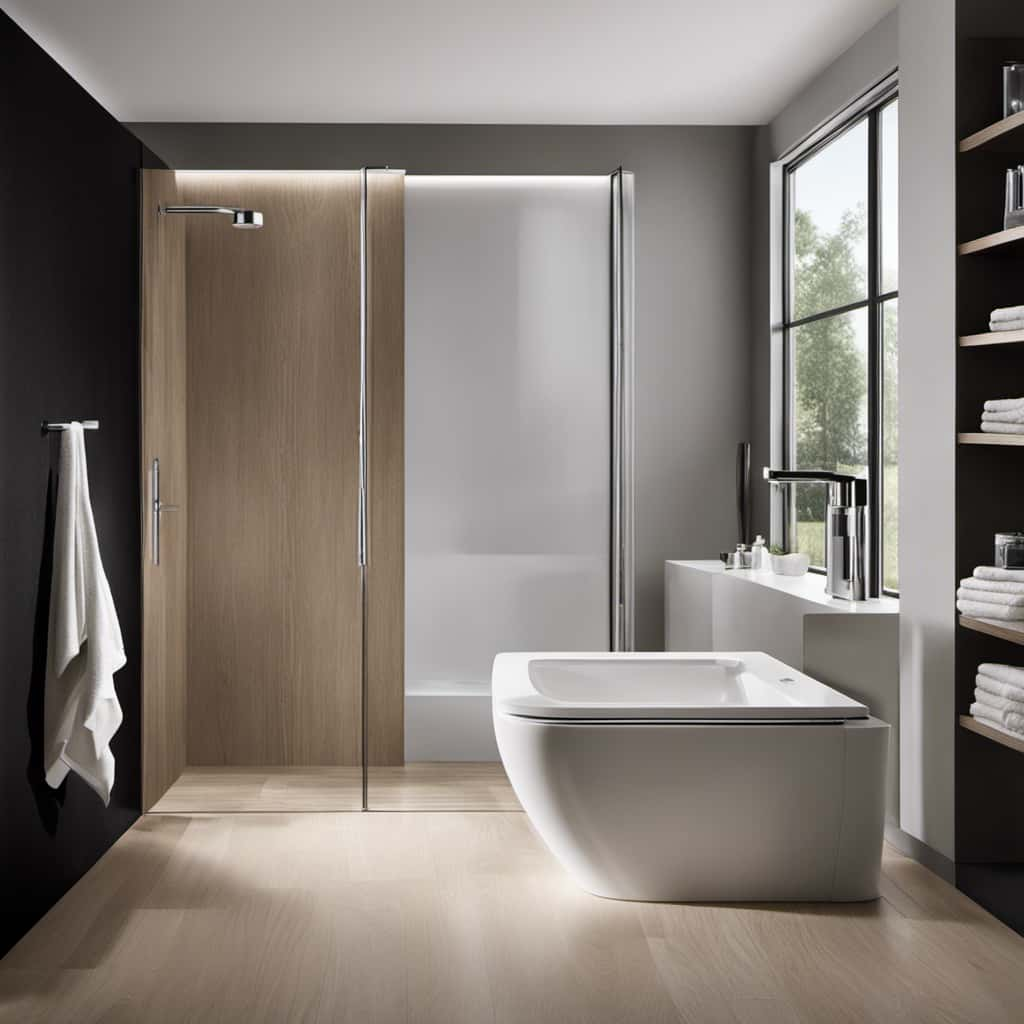
Alternatively, you can choose to install a composting toilet on your boat. These toilets use natural processes to break down waste, eliminating the need for traditional emptying methods. However, it’s important to properly maintain and monitor these toilets to ensure they’re functioning effectively.
Understanding the regulations and exploring alternatives to traditional methods will help you choose the right method for emptying your boat’s toilet.
Preparing the Boat for Waste Disposal
Before we can dispose of the waste from the boat’s toilet, we need to prepare the boat for waste disposal. Proper boat maintenance is crucial to ensure safe and effective waste treatment.
Firstly, we must ensure that the holding tank is in good condition and free from any leaks or cracks. Regular inspections are essential to identify and address any potential issues. Additionally, it’s important to regularly clean and sanitize the holding tank to prevent the buildup of odors and bacteria. This can be done by using appropriate cleaning agents and following manufacturer’s instructions.
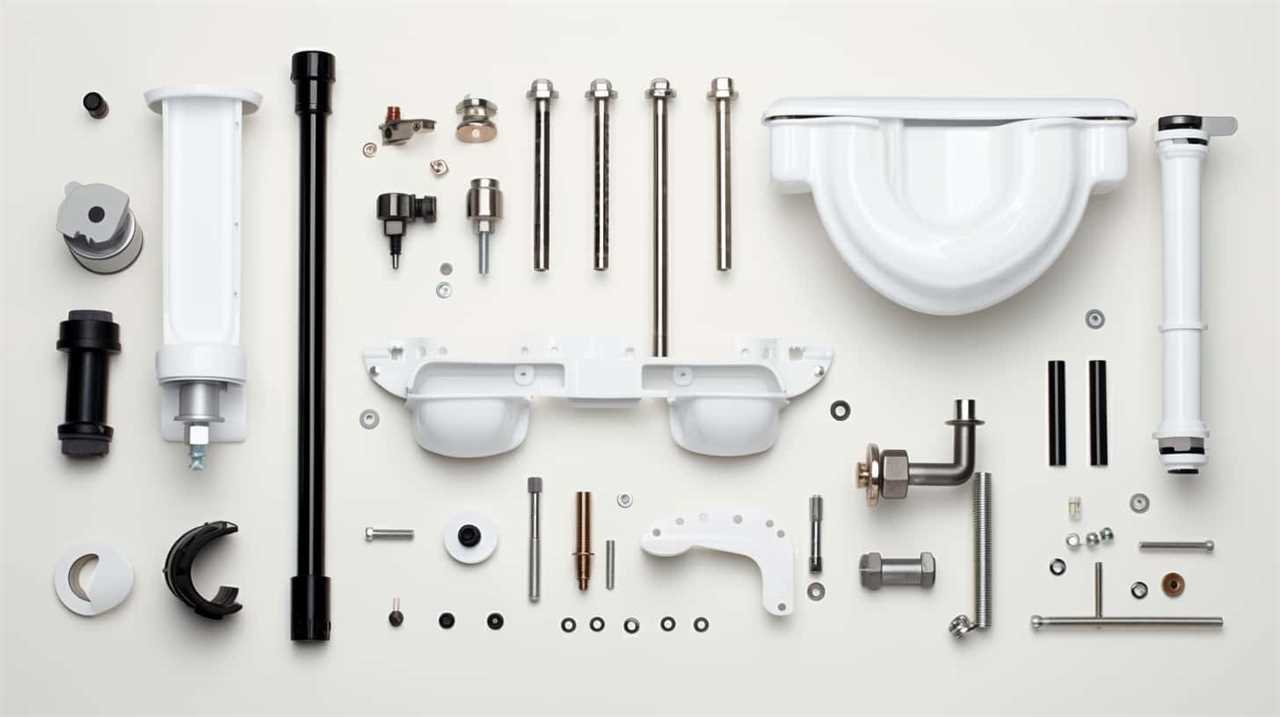
Another aspect of preparing the boat for waste disposal is ensuring that the plumbing system is functioning properly. Regularly inspecting and maintaining the system will help prevent clogs and backups. It’s recommended to use biodegradable toilet paper to minimize the risk of clogging and to easily break down in the holding tank.
Furthermore, it’s vital to have a waste treatment system onboard the boat. This system helps to break down the waste and neutralize odors before disposal. There are different types of waste treatment systems available, including chemical and biological options. Choosing the right system depends on factors such as boat size, usage frequency, and local regulations.
Gathering the Required Equipment
Now that we understand the importance of preparing the boat for waste disposal, let’s discuss the essential equipment needed for emptying the toilet on a boat.
It’s crucial to gather the right tools to ensure a safe and efficient process.
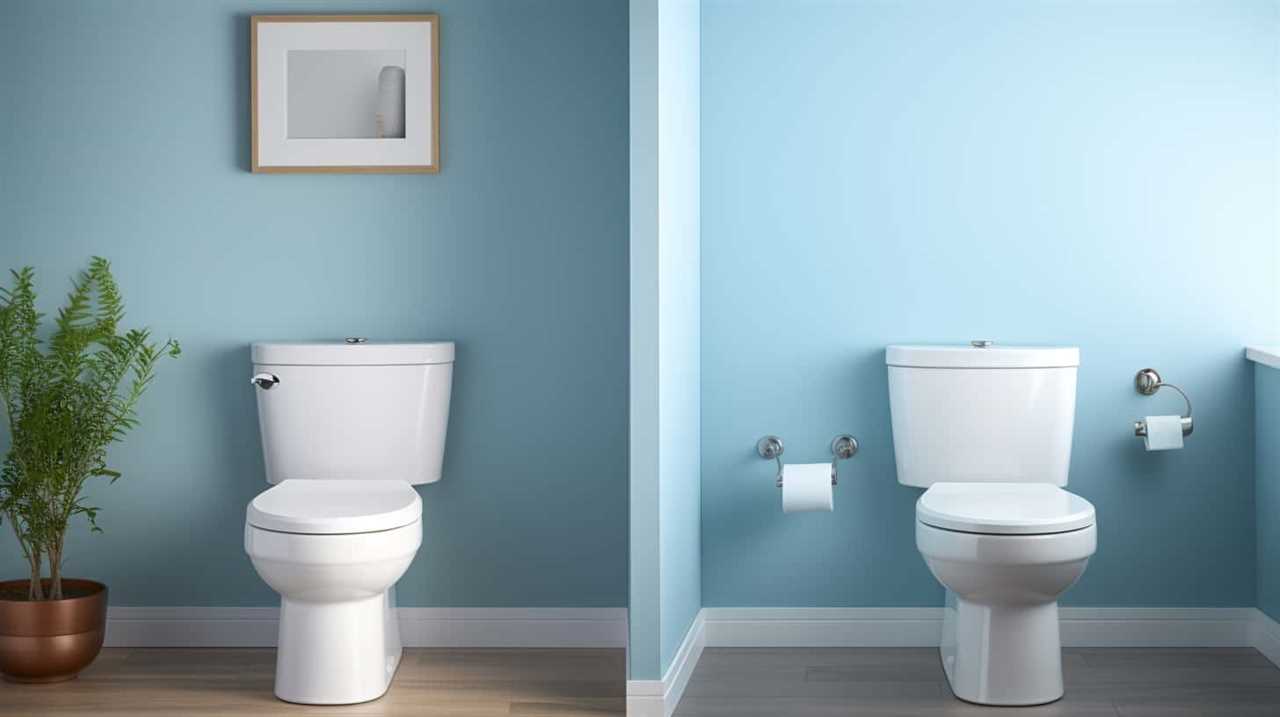
Additionally, we’ll also explore the necessary safety precautions that should be followed during the emptying process to minimize any potential risks.
Essential Equipment for Emptying
To effectively empty a toilet on a boat, we need to gather the essential equipment. Following sanitation regulations and considering waste disposal alternatives are crucial for maintaining cleanliness and environmental responsibility. The table below outlines the necessary equipment for this task:
| Equipment | Description |
|---|---|
| Portable Holding Tank | A tank designed to hold and store waste temporarily. |
| Sanitation Hose | A flexible hose for connecting the toilet to the tank. |
| Pump-Out Hose and Nozzle | Used for emptying the tank into a designated station. |
| Disposable Gloves | Essential for personal hygiene and protection. |
| Waste Treatment Chemicals | Chemicals that break down waste and control odors. |
| Wrench | To secure hose connections and prevent leaks. |
Safety Precautions During Emptying
To ensure a safe and efficient process of emptying a toilet on a boat, we must gather the required equipment and take necessary safety precautions.
Before starting the emptying process, it’s important to wear appropriate protective gear, such as gloves and safety goggles, to prevent any contact with waste materials.
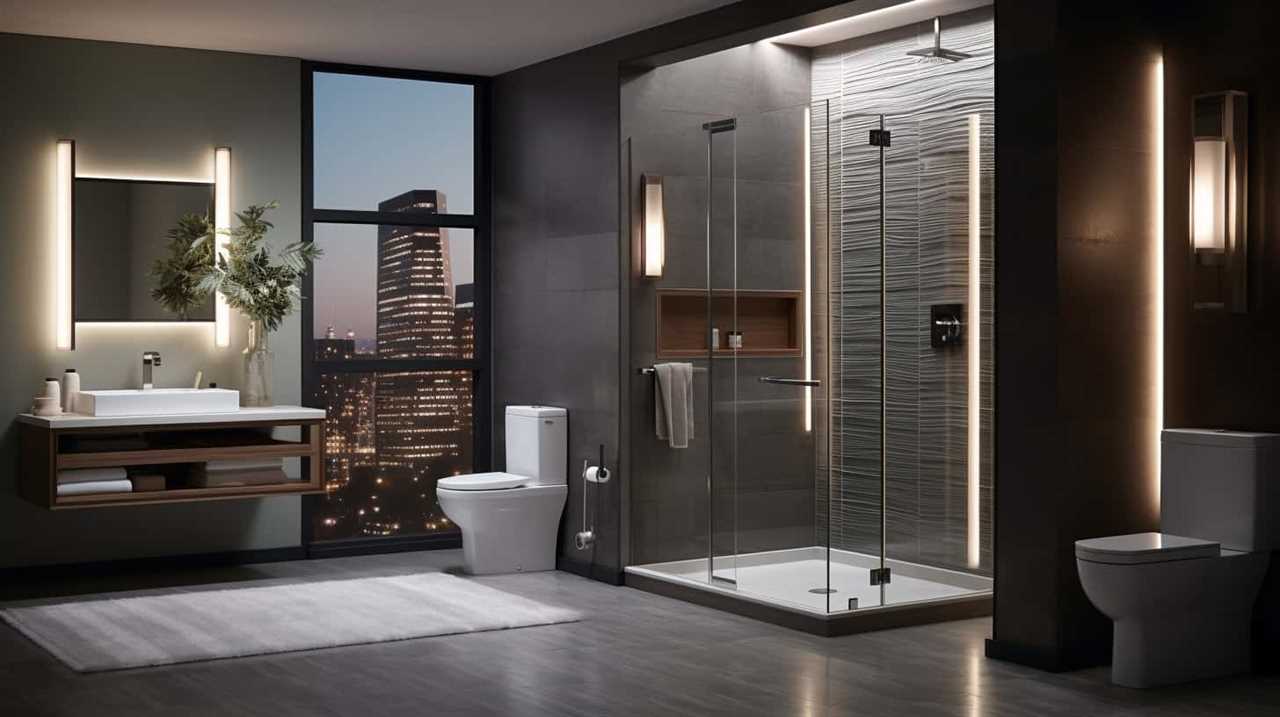
Additionally, it’s essential to ensure that the boat is stable and secure, as any sudden movements can lead to spills and accidents.
Furthermore, it’s crucial to follow safety measures, such as turning off the toilet’s water supply and disconnecting any electrical connections before beginning the emptying process.
By taking these safety precautions, we can minimize the risk of exposure to harmful substances and ensure a safe environment for everyone involved.
With the necessary equipment and safety measures in place, we can now proceed with the steps for emptying the toilet.
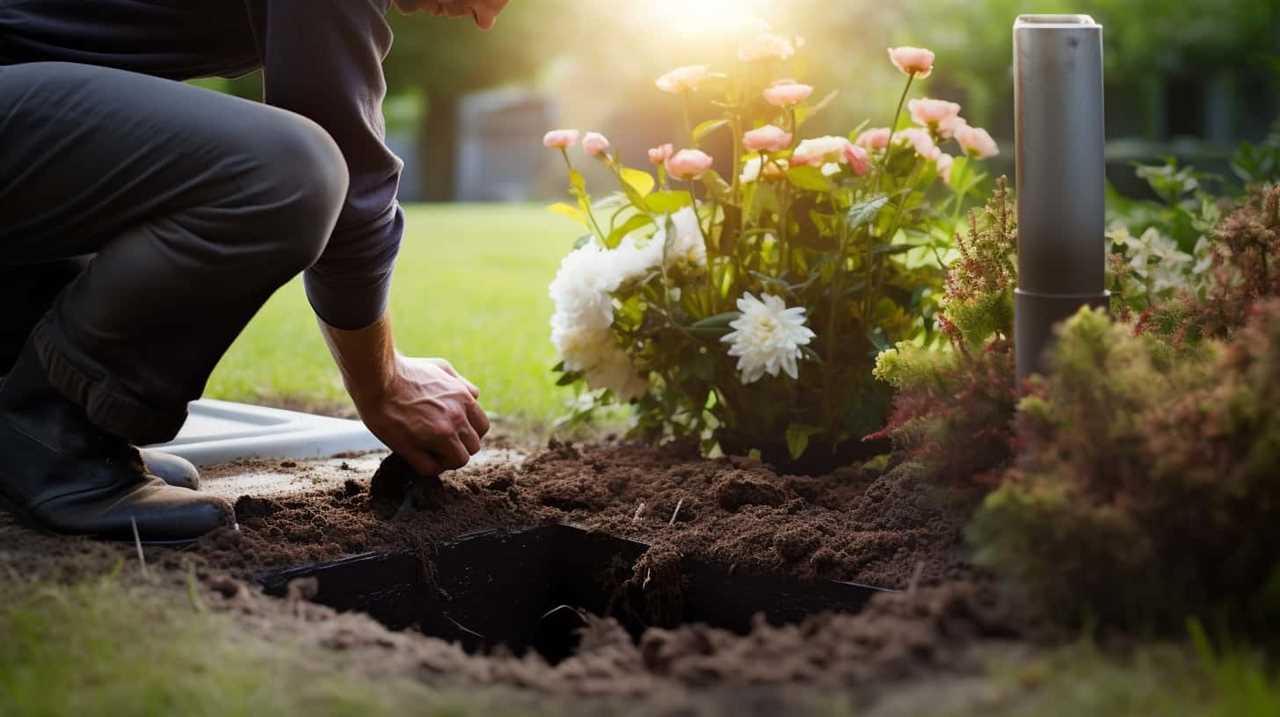
Steps for Emptying the Toilet
We start by removing the waste from the toilet on our boat. To ensure the proper functioning of the toilet system, it’s crucial to perform regular maintenance. This includes emptying the toilet when necessary. Regular maintenance not only prevents unpleasant odors but also reduces the risk of clogs and other common issues.
The first step in emptying the toilet is to locate the holding tank. This tank is where all the waste from the toilet is stored. It’s important to note that emptying the toilet should be done in designated areas to comply with environmental regulations.
Next, we need to open the valve that connects the toilet to the holding tank. This allows the waste to flow into the tank. It’s important to be cautious while doing this to avoid any spillage or leakage.
Once the waste has been emptied into the holding tank, we need to ensure that the tank is properly sealed to prevent any odors or leaks. This can be done by securely closing the valve and checking for any signs of leakage.
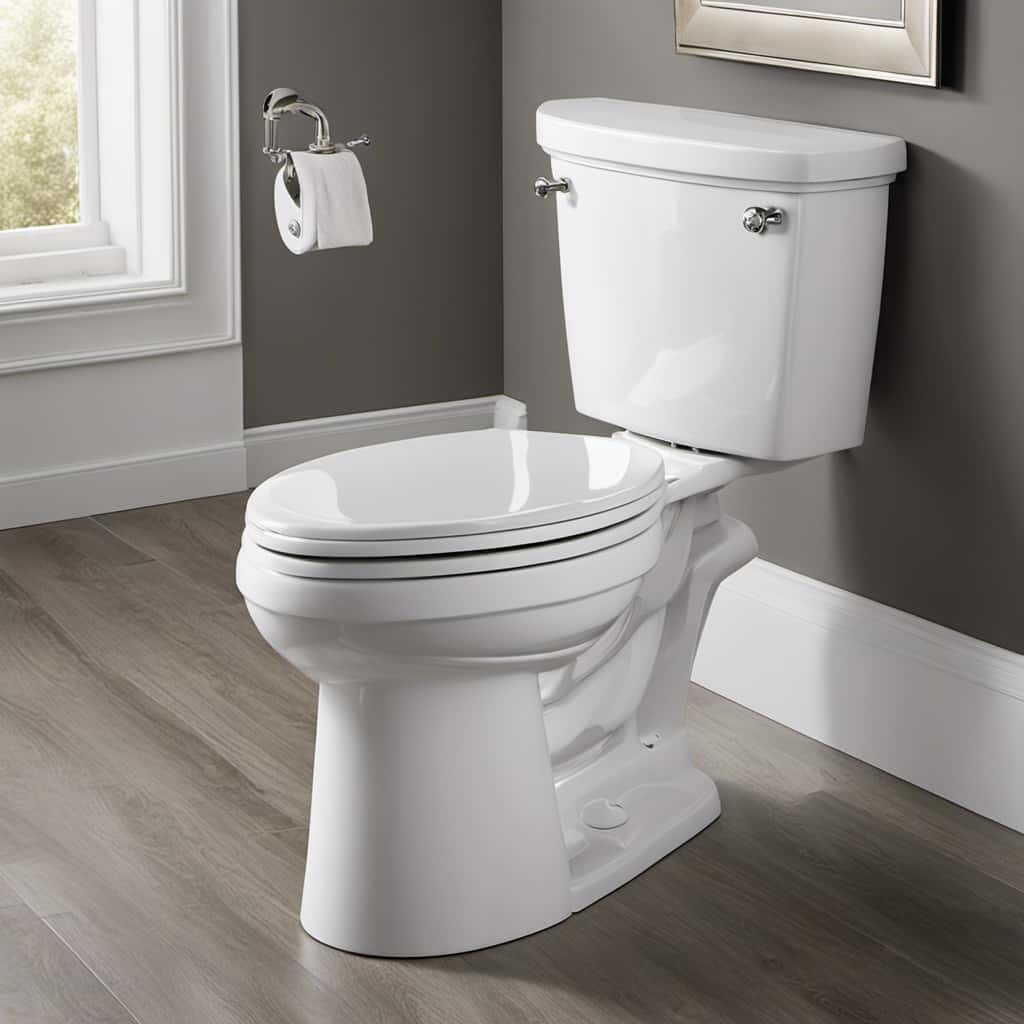
Finally, it’s essential to clean and sanitize the toilet bowl and surrounding area to maintain proper hygiene. This can be done using a marine-friendly cleaner and disinfectant.
Ensuring Safety and Hygiene
For the safety and hygiene of everyone on board, it’s important to prioritize proper maintenance and cleanliness when emptying a toilet on a boat. In order to comply with sanitation regulations and ensure a hygienic environment, it’s crucial to implement effective waste management strategies.
Firstly, it’s essential to use a reliable and well-maintained holding tank system. This system should be regularly inspected and cleaned to prevent any leaks or odors. Adequate ventilation is also important to maintain air quality and prevent the buildup of harmful gases.
When emptying the toilet, it’s necessary to follow proper procedures to minimize the risk of contamination. This includes wearing appropriate personal protective equipment, such as gloves and masks, to prevent direct contact with waste. Additionally, it’s crucial to use designated disposal facilities that comply with sanitation regulations.
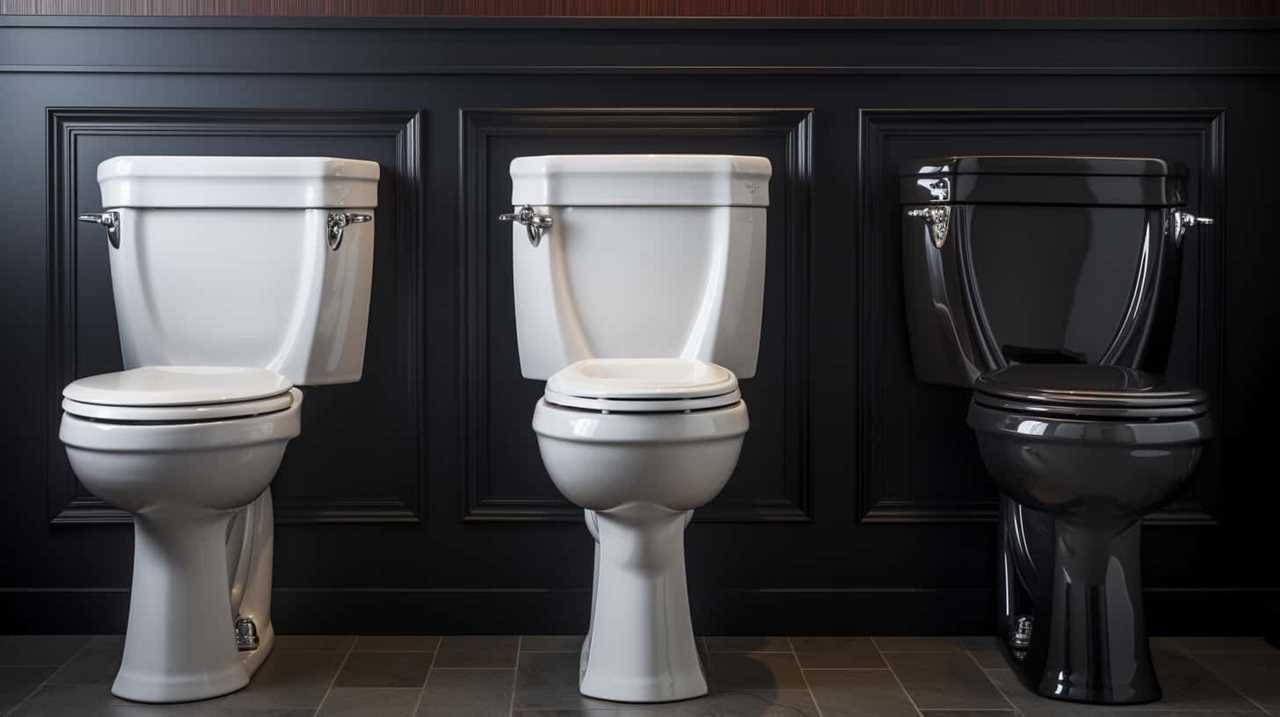
To maintain cleanliness, it’s recommended to regularly clean and disinfect the toilet and surrounding areas. This will help prevent the spread of bacteria and unpleasant odors. Proper waste disposal methods should also be followed to ensure the safe and responsible management of waste.
Disposing of Waste Responsibly
When it comes to disposing of waste responsibly on a boat, it’s essential to prioritize environmentally friendly waste disposal methods. This includes using biodegradable products and avoiding the dumping of waste into bodies of water.
Proper waste management techniques should be implemented to ensure minimal impact on the environment. This can include using designated pump-out stations or composting toilets.
Environmentally Friendly Waste Disposal
To ensure responsible waste disposal, it’s essential to explore environmentally friendly methods of emptying a toilet on a boat.
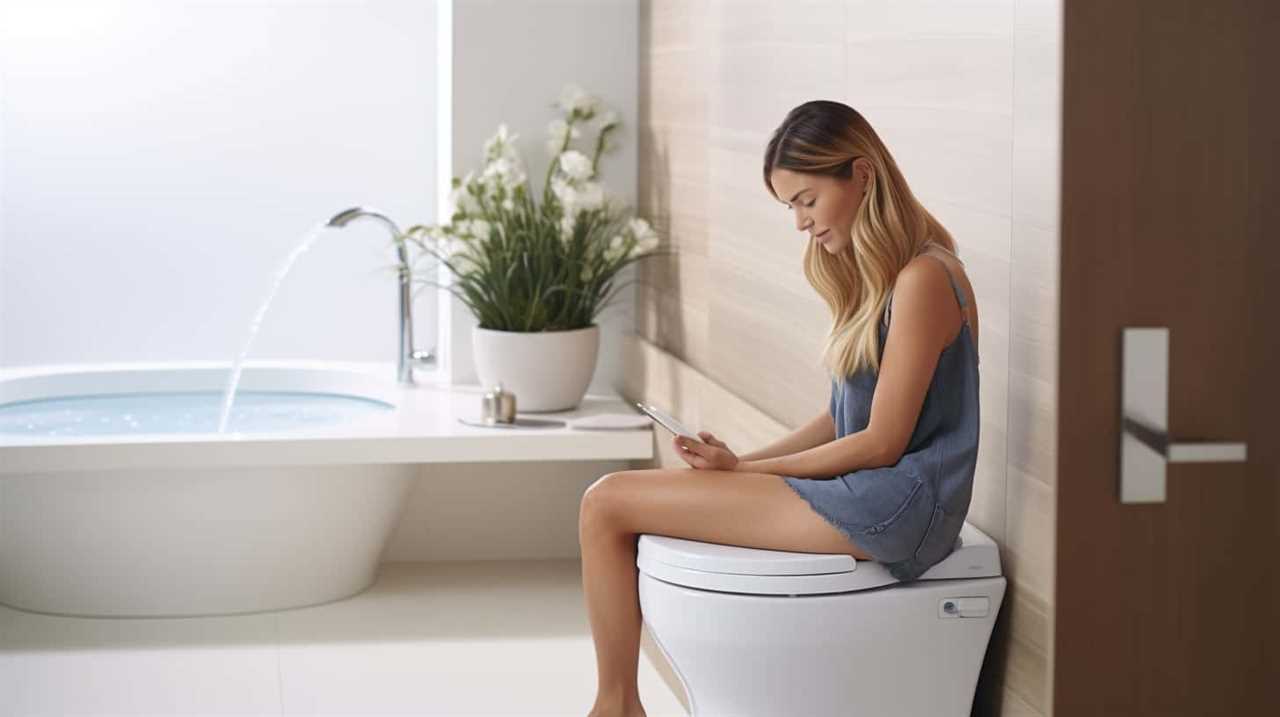
Eco-friendly waste disposal is crucial for reducing the environmental impact of boating activities.
One effective method is to use a marine sanitation device (MSD) that treats the waste before it’s discharged into the water. MSDs can be classified into three types: Type I, Type II, and Type III.
Type I MSDs use chemicals to disinfect the waste, while Type II and Type III MSDs treat the waste through biological or physical processes.
Another option is to use a portable holding tank that can be emptied at a designated pump-out station.
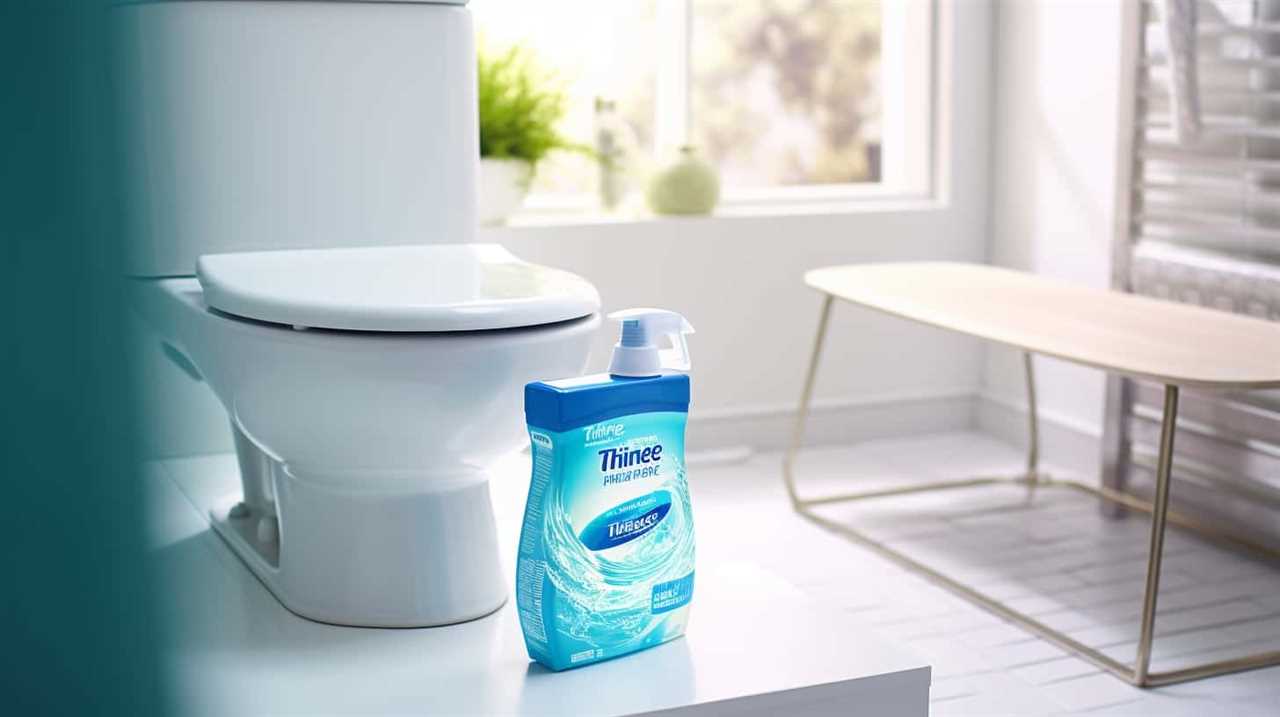
It’s important to properly maintain and clean the MSD or holding tank to ensure optimal performance and minimize environmental harm.
Proper Waste Management Techniques
We implement effective waste management techniques on our boat by responsibly disposing of waste. As responsible boaters, we adhere to waste disposal regulations and strive to practice eco-friendly waste management. Our goal is to minimize our impact on the environment while ensuring the safety and cleanliness of our boat.
To achieve this, we follow a strict waste management plan that includes the proper segregation and disposal of different types of waste. We have a designated area on our boat for waste storage, equipped with separate containers for recyclable, non-recyclable, and hazardous waste. We also make use of biodegradable waste bags to minimize our ecological footprint.
In addition, we regularly educate ourselves about the latest waste disposal regulations and eco-friendly waste management practices. By staying informed and proactive, we can ensure that our waste management techniques are not only effective but also aligned with industry standards and environmental best practices.
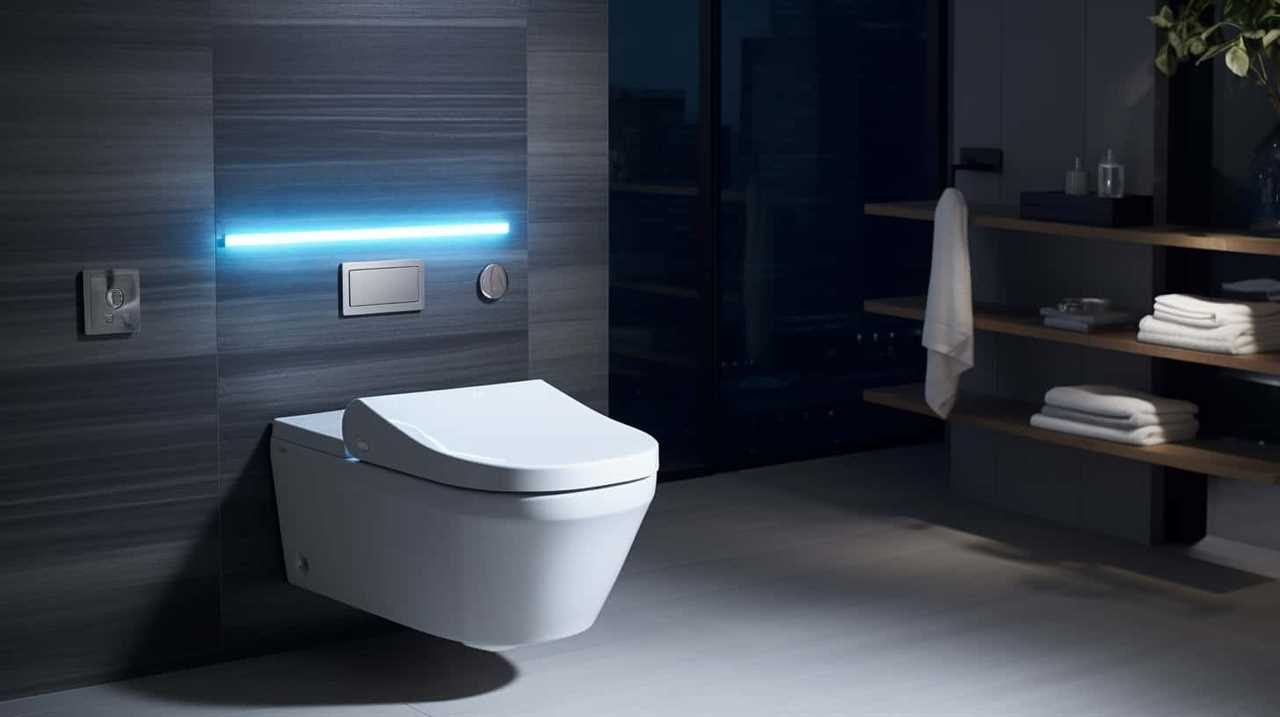
To better understand our waste management techniques, here is a table outlining the different types of waste we generate on our boat and how we responsibly dispose of them:
| Waste Type | Disposal Method |
|---|---|
| Recyclable waste | Recycling center |
| Non-recyclable waste | Proper waste bins |
| Hazardous waste | Certified disposal facility |
Cleaning and Maintaining the Toilet System
To clean and maintain the toilet system on a boat, we regularly use disinfectant and scrub the bowl thoroughly. This ensures that the toilet remains clean and free from any buildup or odors.
In addition to regular cleaning, there are several other maintenance tasks that should be performed to keep the toilet system in optimal condition. Here are four important aspects of toilet system maintenance:
- Check for leaks: Regularly inspect the toilet system for any signs of leaks. This includes checking the connections, hoses, and seals. If you notice any leaks, it’s important to address them promptly to prevent further damage to the system.
- Test the flushing mechanism: Ensure that the flushing mechanism is working properly by testing it regularly. This involves flushing the toilet and checking for any issues such as weak flushing or incomplete flushing. If you encounter any problems, it may be necessary to clean or replace the flushing mechanism.
- Clean the macerator: The macerator is a crucial component of the toilet system that grinds waste before it’s discharged. It’s important to clean the macerator regularly to prevent clogs and maintain its efficiency. Follow the manufacturer’s instructions for cleaning and use appropriate cleaning solutions.
- Inspect the vent system: The vent system plays a vital role in preventing foul odors and maintaining the proper functioning of the toilet system. Inspect the vent system regularly to ensure that it’s clear of any obstructions or blockages.
By understanding maintenance and performing these tasks regularly, you can prevent common issues and keep your boat’s toilet system running smoothly.

Now, let’s move on to the next section to learn about dealing with common issues and troubleshooting.
Dealing With Common Issues and Troubleshooting
As boat owners, it’s essential that we address and troubleshoot common issues that may arise with the toilet system to ensure its proper functioning. Dealing with common troubleshooting scenarios can be frustrating, but with the right tips and tricks, we can quickly resolve these issues and get back to enjoying our time on the water.
One common issue that boat owners face is a clogged toilet. This could be caused by excessive toilet paper or foreign objects being flushed down the system. To troubleshoot this, we can try using a plunger to dislodge the clog. If that doesn’t work, a toilet auger can be used to break up the obstruction. It’s important to remember to use gentle force to avoid damaging the system.
Another issue that may occur is a leaking toilet. This could be due to a worn-out seal or a loose connection. To fix this, we should check the seal and tighten any loose connections. If the seal is damaged, it will need to be replaced.
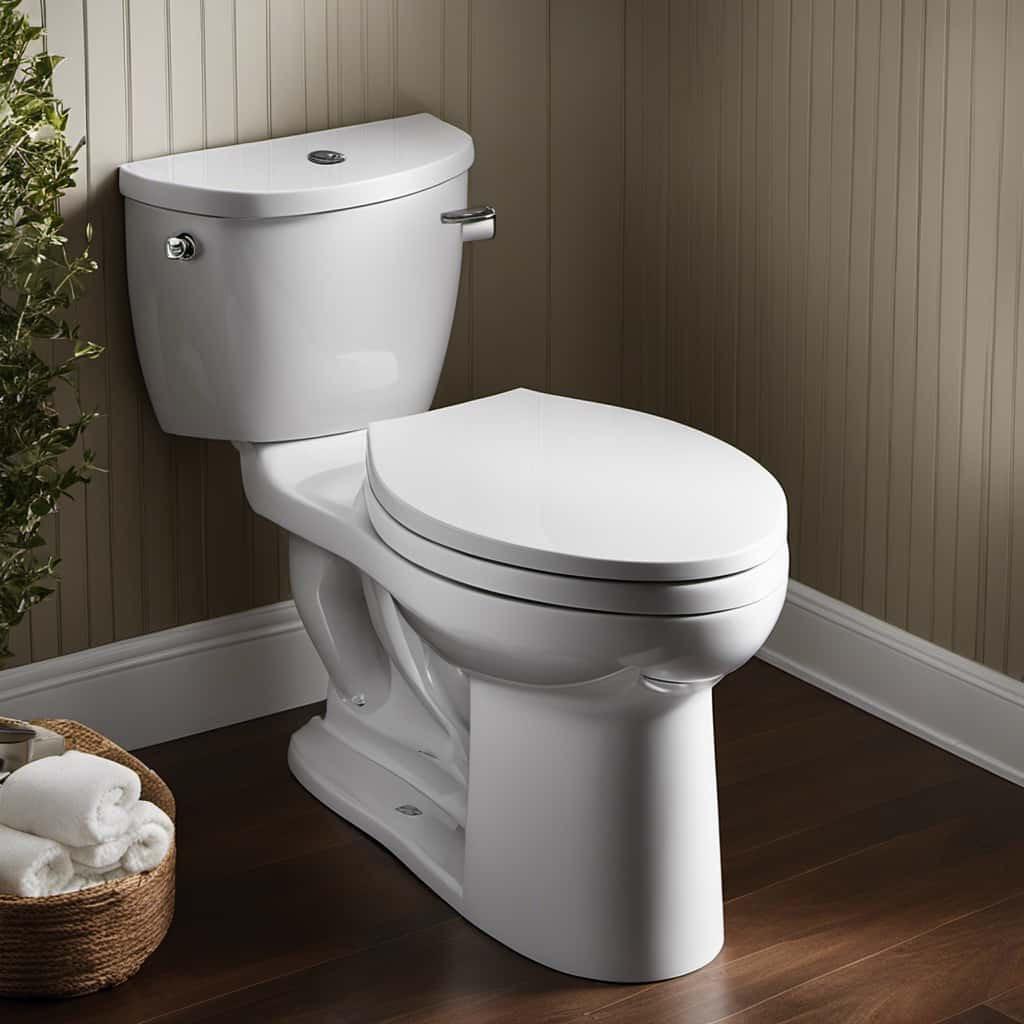
Lastly, a toilet that won’t flush properly could be caused by a problem with the water supply or the flushing mechanism. We should check the water supply valve to ensure it’s fully open. If the flushing mechanism isn’t working correctly, it may need to be repaired or replaced.
Best Practices for Odor Control
When it comes to odor control on a boat’s toilet, there are two main methods to consider: chemical and natural.
Chemical methods involve the use of products specifically designed to neutralize and mask odors. These products are often available in the form of tablets, liquids, or powders that can be added to the toilet bowl or holding tank. They work by breaking down waste and eliminating odor-causing bacteria. While chemical methods can be effective in controlling odors, they may also introduce harsh chemicals into the marine environment. It’s important to use these products responsibly and in accordance with any local regulations.
Natural methods, on the other hand, rely on ventilation and airflow to minimize smells. This can be achieved by ensuring proper ventilation in the boat’s toilet area, such as installing a ventilation fan or opening windows and hatches when possible. Additionally, regularly emptying and cleaning the holding tank can help prevent odors from building up. While natural methods may not be as potent as chemical products, they are often more environmentally friendly and can be a good option for those who prefer a more natural approach.
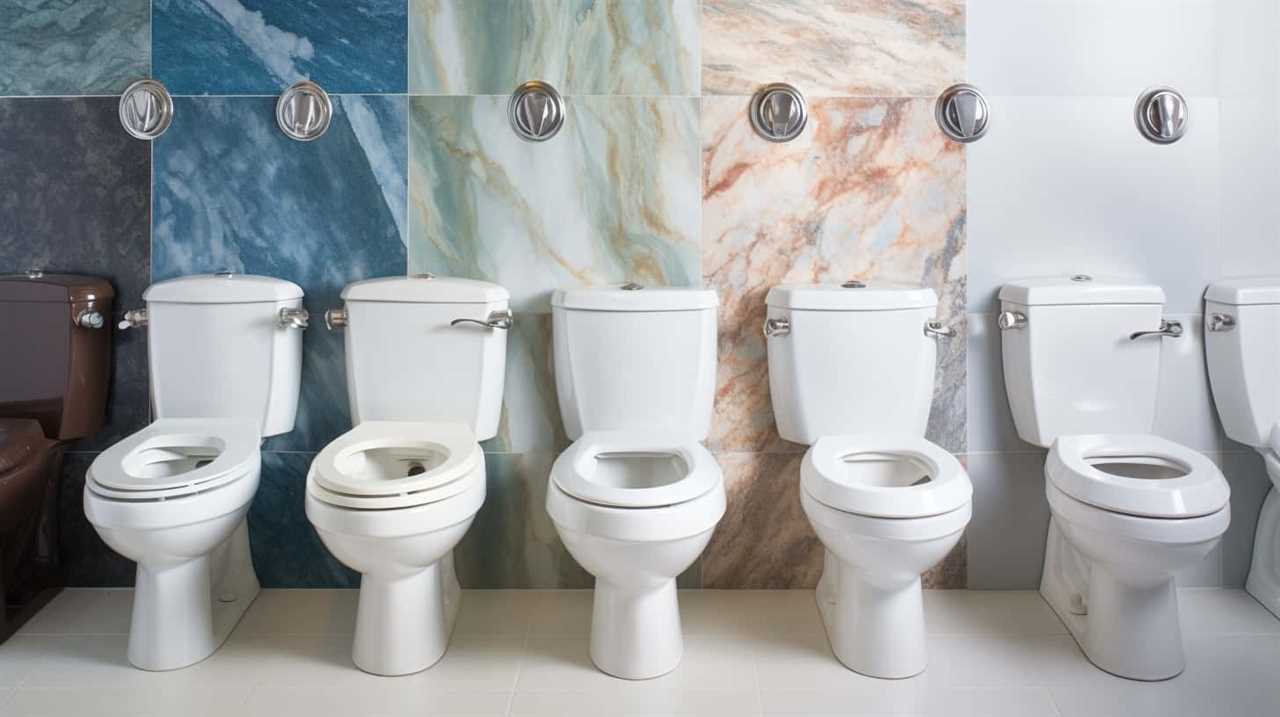
Both approaches have their pros and cons, and it’s important to understand the best practices for each in order to effectively control odors on a boat. Whichever method you choose, regularly maintaining and cleaning your boat’s toilet system is essential for odor control and overall hygiene.
Chemical Vs Natural Methods
For odor control when emptying a toilet on a boat, we recommend using either chemical or natural methods. Here are the pros and cons of each:
- Chemical methods:
- Pros:
Chemicals, such as formaldehyde-based solutions, are highly effective in eliminating odors. They break down waste and suppress bacterial growth, reducing the risk of unpleasant smells. - Cons:
Chemicals can be harsh and potentially harmful to the environment. They may also cause irritation to the skin and respiratory system if not handled properly.
- Natural methods:
- Pros:
Natural methods, like enzyme-based additives or composting toilets, offer an eco-friendly alternative. They use natural ingredients to break down waste, neutralize odors, and promote the growth of beneficial bacteria. - Cons:
Natural methods may have limited effectiveness in controlling strong odors. They also require regular maintenance and may take longer to fully eliminate odors compared to chemical methods.
Consider your preferences, environmental impact, and effectiveness when choosing between chemical and natural methods for odor control on your boat.
Ventilation and Airflow
To effectively control odors when emptying a toilet on a boat, we prioritize proper ventilation and airflow. Maintaining a well-ventilated area is crucial for minimizing unpleasant odors and ensuring a comfortable onboard experience.
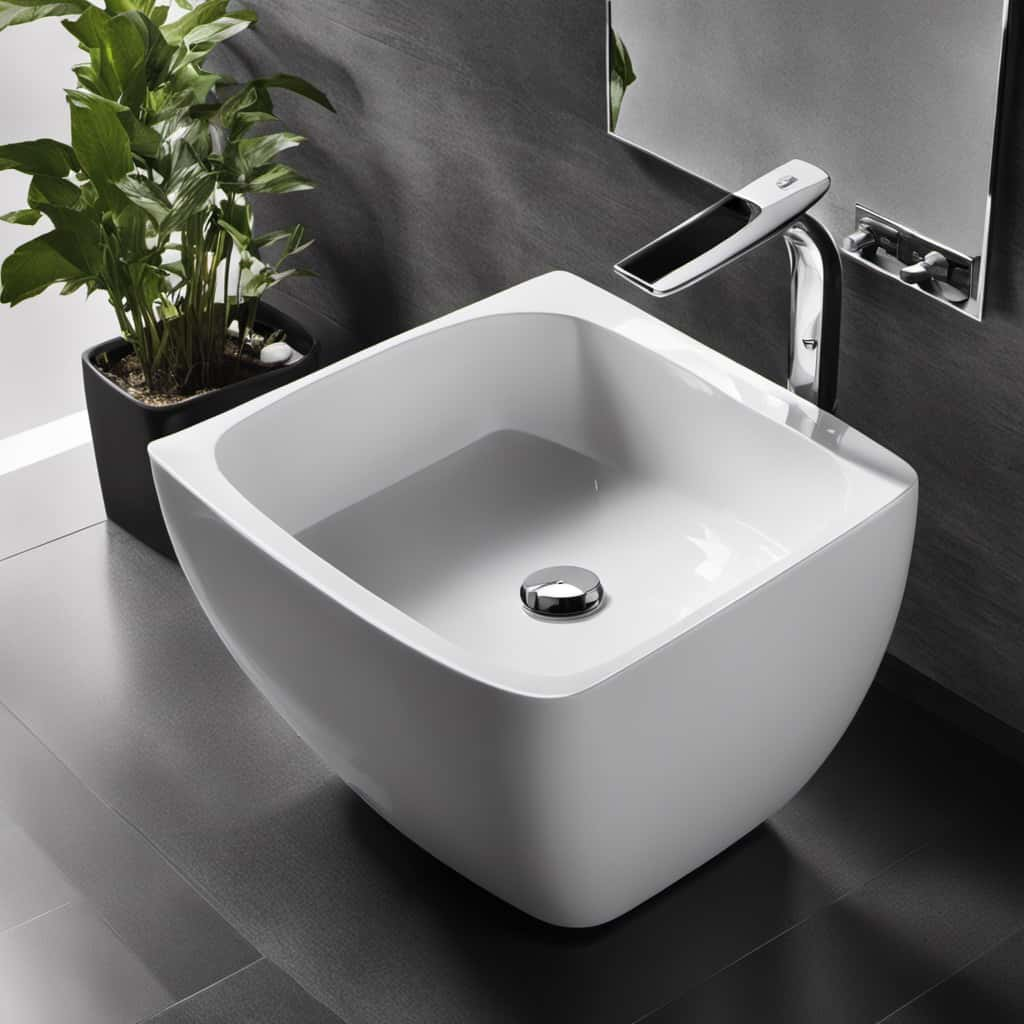
Regular ventilation maintenance is essential to prevent the buildup of odorous gases and maintain a fresh atmosphere. This can be achieved by installing and routinely inspecting ventilation systems to ensure they’re functioning optimally.
Additionally, proper airflow is key to eliminating odors quickly and efficiently. Opening windows, hatches, or vents can facilitate the entry of fresh air and the removal of foul odors. Utilizing odor control techniques such as air purifiers or activated carbon filters can also enhance the effectiveness of ventilation systems.
Tips for Preventing Toilet Clogs and Blockages
We can prevent toilet clogs and blockages by being mindful of what we flush down the toilet on our boat. Here are four important tips to help us maintain a clog-free toilet system:
- Proper waste disposal: Only flush toilet paper and human waste down the toilet. Avoid flushing items like wet wipes, paper towels, feminine hygiene products, or any other non-biodegradable materials. These items can easily cause clogs and blockages in the system.
- Regular maintenance: Conduct routine checks and maintenance on the toilet system to prevent clogs. This includes inspecting and cleaning the tank, valves, and pipes regularly. Additionally, ensure that the tank is properly vented to prevent odor buildup.
- Water conservation: Use water efficiently when flushing the toilet. Avoid excessive amounts of toilet paper to minimize the risk of clogs. If necessary, flush multiple times instead of trying to flush everything in one go.
- Educate passengers: Inform everyone on board about proper toilet usage. Teach them about what can and can’t be flushed down the toilet to avoid accidental clogs. Place clear signs or reminders near the toilet as a visual reminder.
Frequently Asked Questions
Can I Use Regular Household Cleaning Products to Clean the Boat’s Toilet System?
Regular household cleaning products may not be suitable for cleaning a boat’s toilet system. It’s important to use products specifically designed for marine sanitation systems. These products are formulated to break down waste and prevent clogs, ensuring the proper functioning of the system.
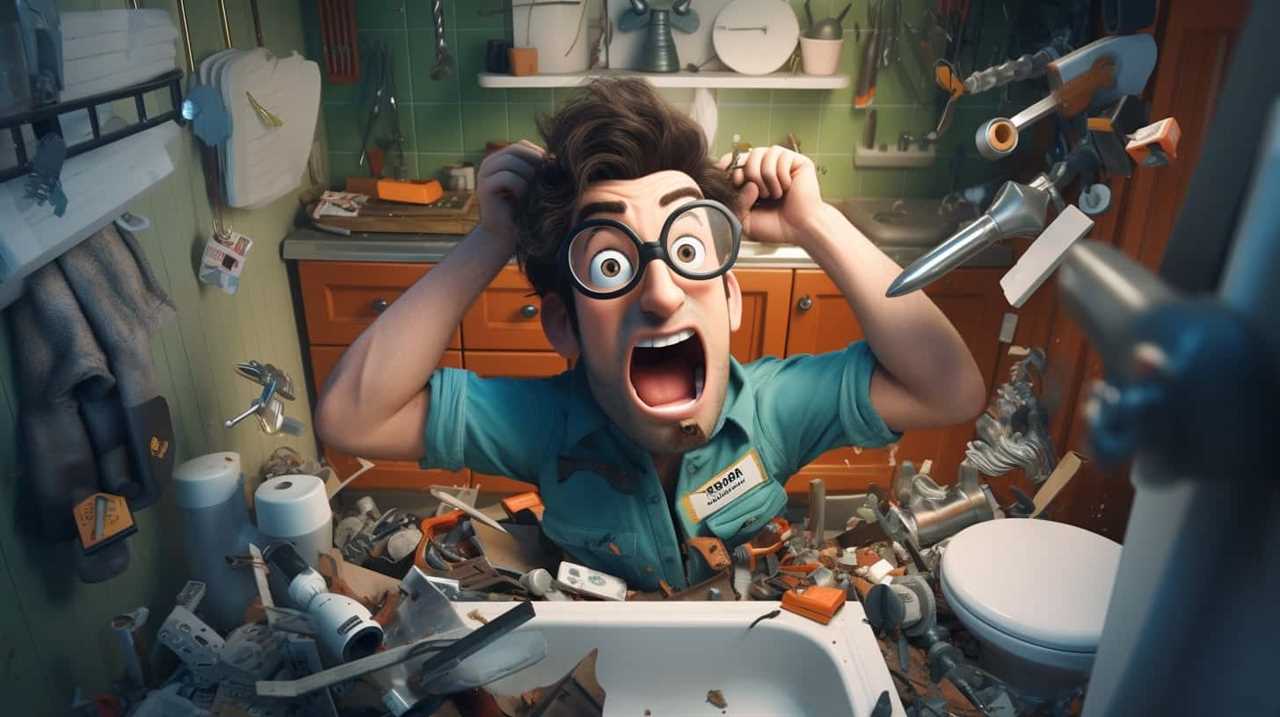
However, if you’re looking for alternative cleaning methods, there are eco-friendly and biodegradable options available that can effectively clean the toilet without harming the environment. It’s always recommended to consult the manufacturer’s guidelines for the best cleaning practices.
What Should I Do if the Boat’s Sanitation System Is Not Working Properly?
If the boat’s sanitation system isn’t functioning properly, there are alternative solutions that we can try before seeking professional help.
First, we should check for any clogs or blockages in the system and clear them if possible.
Additionally, we can inspect the valves and seals for any leaks or damage.
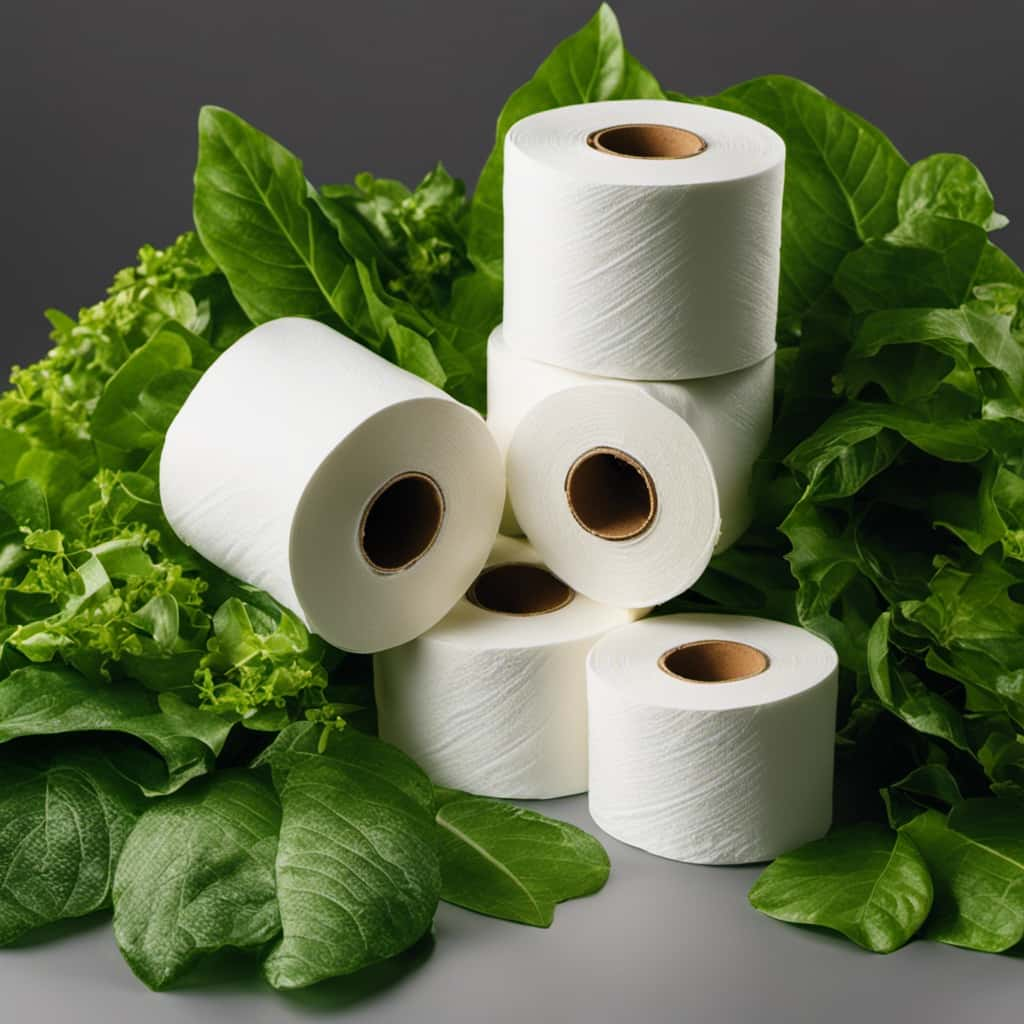
If these steps don’t resolve the issue, it may be necessary to consult a professional to diagnose and repair the problem.
Is It Safe to Dispose of Toilet Waste in Open Water?
When it comes to toilet waste disposal on a boat, it’s essential to consider the regulations and environmental impact.
Disposing of toilet waste in open water may not be safe, as there are specific rules and guidelines in place regarding this matter. It’s crucial to follow these regulations to ensure the protection of the environment and human health.
Understanding the proper methods for emptying a boat toilet is essential to maintain a clean and safe boating experience.
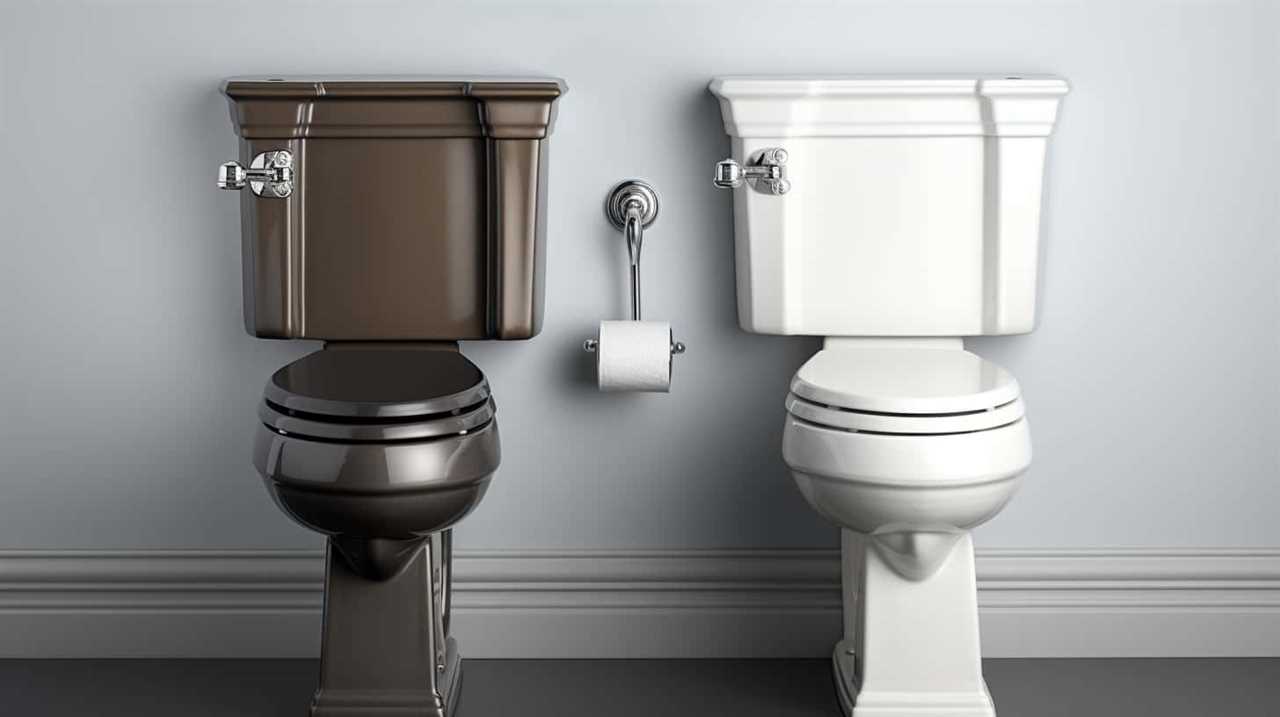
How Often Should I Clean and Maintain the Boat’s Toilet System?
When it comes to maintaining our boat’s toilet system, we prioritize regular cleaning and maintenance.
We understand the importance of using appropriate toilet cleaning products to ensure optimal functionality and hygiene.
By following a consistent toilet maintenance frequency, we can prevent clogs, odors, and other issues that may arise.
Taking these steps helps us maintain a well-functioning and comfortable toilet system on our boat.
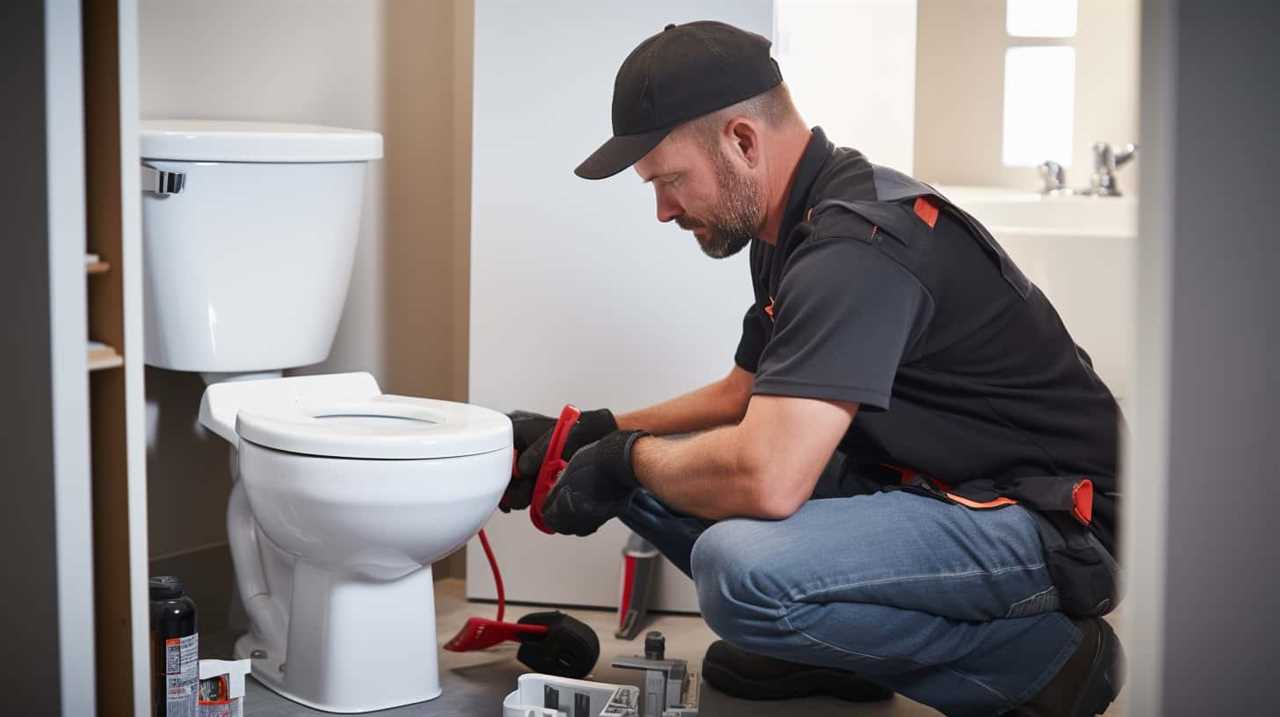
What Are Some Common Signs of a Toilet Clog or Blockage on a Boat?
When it comes to maintaining a boat’s toilet system, it’s important to be aware of the common signs of a clog or blockage. These signs may include slow draining, gurgling sounds, or unpleasant odors.
To prevent toilet clogs, regular cleaning and proper waste disposal are essential. However, if a clog does occur, there are several methods to unclog a boat toilet, such as using a plunger or a toilet auger.
Conclusion
In conclusion, proper waste disposal on a boat is vital for the overall hygiene and comfort of passengers.
By understanding the boat’s sanitation system and choosing the right method for emptying the toilet, you can ensure a smooth and odor-free experience.
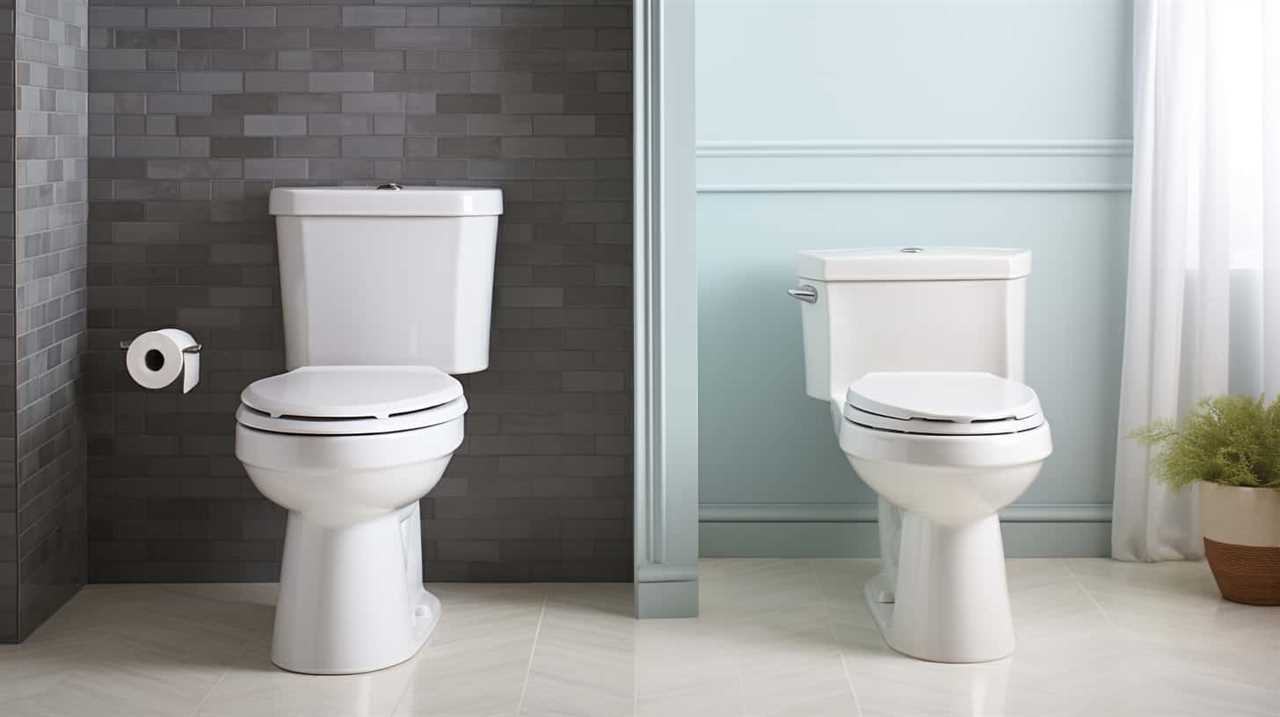
Regular cleaning and maintenance of the toilet system, along with troubleshooting common issues, will help keep everything in working order.
Following best practices for odor control and preventing clogs will further enhance your boating experience.
